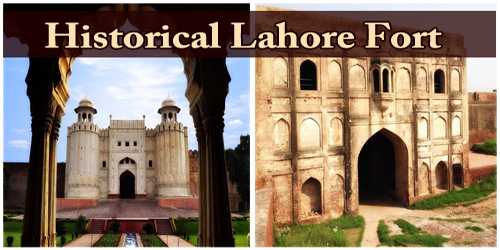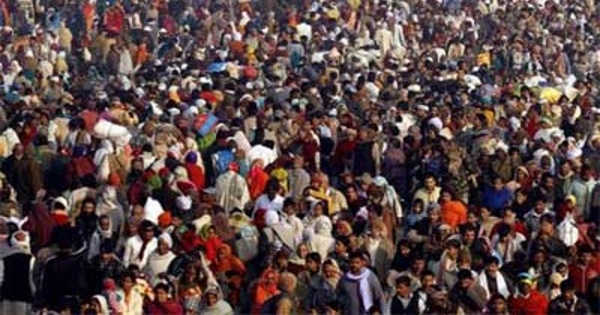Introduction: Lahore is a historical city in Pakistan, filled with landmarks. People can also say that Lahore carries a lot of figments from the past. Lahore has been the cultural and social hub for the subcontinent for centuries. Enumerable emperors set foot in this city and constructed a number of grandiloquent structures that still carry the weight of history. Lahore fort is one of the pillars of this rich legacy of this city.
Lahore Fort, commonly known in Urdu as “Shahi Qila” (royal fort), was originally designed to protect the Northern-Western entrance to the walled, old city of Lahore in Pakistan.
History and Architecture: Mughal king Muhammad Akbar took control of the fort in 1575. Then came the Sikh era (1712-1849) followed by British colonials (1846). This fort has been repeatedly damaged, demolished, and rebuilt many times. It occupies around about 50 acres of land.
Lahore fort was built during the reign of the Mughal emperor Akbar. It spans across a vast area. Covering almost 20-30 acres. It has a huge tower that acted as watch posts during early times. The wall of the fort is quite wide and thick. It was made to withstand the attack from any intruder that may have the intention to capture the fort. Inside the fort are buildings that housed the Kings of that era. Beautiful gardens also adorn the ambiance of the fort. These were the parks where Kings used to stroll. One can get an idea of the luxurious life the kings used to spend by viewing these marvelous structures.
Though the site of the Lahore Fort has been inhabited for millennia, the first record of a fortified structure at the site was in regard to an 11th-century mud-brick fort. The foundations of the modern Lahore Fort date to 1566 during the reign of Emperor Akbar, who bestowed the fort with a syncretic architectural style that featured both Islamic and Hindu motifs. Additions from the Shah Jahan period are characterized by luxurious marble with inlaid Persian floral designs, while the fort’s grand and iconic Alamgiri Gate was constructed by the last of the great Mughal Emperors, Aurangzeb, and faces the renowned Badshahi Mosque.
The fort is situated in the northwest corner of the city, beside the Walled city and is rectangular in shape, it has 13 gates which were also built by Akbar, and the main gates are located along the middle of the eastern and western walls. In the heart of the city, there is the beautiful Lahore Fort, a secured palace complex.
The fort is divided into two sections: first the administrative section, which is well connected with main entrances and includes gardens and Diwan-e-Khas for royal audiences. The second, a private and concealed residential section is divided into courts in the north and accessible through the elephant gate. It also contains Sheesh Mahal, spacious bedrooms, and small gardens. The exterior walls are decorated with blue Persian Kashi tiles. The original entrance faces the Maryam Zamani Mosque and the larger Alamgiri gate opens towards Hazuri Bagh through the majestic Badshahi mosque. The influence of Hindu architecture is seen in the zoomorphic corbels.
The architecture of the structure is magnificent and it is a palace right out of a fairytale. The entrance is remarkable with twin domes which lead further to extensively decked courtyards and pavilions with water features, some with wall decorations of inlaid precious stones and painted designs, some of this eye-catching decorations still exist even today. These courtyards are so huge in size that it allows many elephants carrying people from the royal family to enter simultaneously together, in fact, there are a flight of stone stairs constructed especially for the elephants’ parades.
The infamous palace of Mirrors also known as the Sheesh Mahal is situated in the North East area of the Fort, it the most gorgeous palace in the fort and is made beautiful by small mirrors of different color sets. This place was made by Shah Jehan in 1631. It is a deluxe palace to stay in during summer months with restrooms that are like a long hall at its either end and which open to a veranda which is eye-catching and the view is of a marble-paved quadrangle with a water fountain in the center.
Information: The fort today is not like as it was when it was first built in 1566. This is because every Mughal emperor that came along beside the Sikhs and the British colonizers further built a pavilion or a palace of the wall to the fort. Jahangir, Shah Jehan, and later Aurangzeb created their own changes by further constructing hugely secure walls to the structure. Akbar especially got the Hall of Commoners also known as the Diwan-e-Aam constructed in the traditional Iranian style, it is built in all red sandstone which was imported from Rajasthan, Shah Jehan was responsible for the construction of Diwan-e-Khas, from there visitors could see river Ravi, in the year of 1631 when Shah Jehan started the construction of Taj Mahal, he also constructed the Moti Masjid or the Pearl Mosque and even his own bedroom. The Mughal emperor Jehangir made extensions to the gardens and built the castle in the Jehangir’s Quadrangle.
Excavations in 1959 in front of Diwan-i-Am led to the discovery of a gold coin dated 1025 CE belonging to Mahmud Ghaznavi. The coin was unearthed at the depth of 25 feet (7.6 m) from the lawn. The cultural layers were continuous to the depth of 15 feet (4.6 m) indicating that the fort was inhabited by people even before his conquest.
While relaying the deteriorated floor of Akbari Gate in April 2007, three floors in the fort were unearthed belonging to the British, Sikh, and Mughal periods. The floor of the British, Sikh, and Mughal periods was constructed with bricks, burnt bricks, and pebbles respectively. The latter either built during Jahangir’s or Shah Jahan’s era was the hallmark of Mughals.
Conclusion: The fort displays the exquisite lifestyle of the Mughal emperors and is proof of Lahore’s beautiful history; it is a tourist attraction and one sight that no one would regret seeing. Most of the fort is now ruined due to improper care by the locals. As the whole structure is centuries old it needs persistent maintenance work. The locals should be more careful and should take part in preserving this heritage. So the coming generations can also have a chance to see history through their eyes.
















